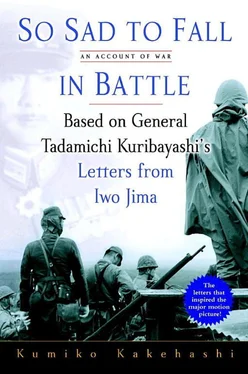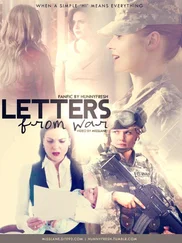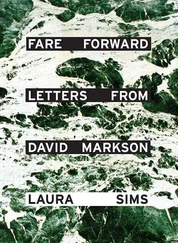Kuribayashi, however, was convinced that the enemy would come to capture Iwo Jima because of its airfields. He also believed that “the commander should always be at the front line” and decided to establish his headquarters on the island. He then spent the nine-month period between assuming his post and death and defeat together with his men on the island, never leaving it even once.
A second key factor in Iwo Jima’s fate was its position. It was situated 1,250 kilometers from Tokyo and 1,400 kilometers from Saipan. If you drew a straight line between the two places, the island was almost exactly halfway between the two. Iwo Jima would clearly be the ultimate foothold for the Americans, who were fighting their way up to the Japanese mainland one island at a time.
When Kuribayashi reached Iwo Jima, the Americans were just gearing up to take the Mariana Islands: Saipan, Guam, and Tinian. If they succeeded in capturing the Marianas, Iwo Jima would be next on their list, no matter what the cost.
The Americans planned to station the newly produced B-29 bomber, the “Superfortress,” on Saipan. But they faced four serious problems before they could send these colossal bombers in air raids against the Japanese mainland.
First of all, any B-29s that took off from Saipan would have to make the 2,600-kilometer-long trip to Tokyo without any protection from fighters.
Second, since flying such a long distance would require large quantities of fuel, the planes would have to cut down on the payload of bombs they carried.
Third, the planes had nowhere to make emergency landings in the event of mechanical failure or damage from enemy fire.
Fourth, the radar station on Iwo Jima was able to detect incoming American bombers and give the mainland advance warning. There was also the further danger of Japanese fighter planes based on Iwo Jima intercepting the B-29s.
If the Americans could get their hands on Iwo Jima, all these problems would be solved in one stroke.
Of course, from the Japanese perspective, the fall of Iwo Jima would mean the loss of a key position for the defense of the mainland. Were the Americans to capture Iwo Jima, they would be free to carry out massive air raids on all the major cities in Japan, and the chaos of war would engulf ordinary citizens.
Furthermore, unlike either the Philippines or the Mariana Islands, Iwo Jima was actually a part of Metropolitan Tokyo, and as such was a part of Japan itself. Losing the island, no matter how small it was, would mark the first time in history that the Japanese homeland had been invaded. This had to be avoided at all cost.
The American forces launched their invasion of Saipan on June 15, about one week after Kuribayashi had reached Iwo Jima. In a letter Kuribayashi talked about experiencing three air raids in the month he took up his post; these air raids were not random events. The Americans wanted to facilitate their invasion of Saipan by suppressing activity on Iwo Jima’s runways.
Once ashore, the American forces got the upper hand against the Japanese thanks to their overwhelming firepower. Then, on June 19, not that far from Saipan, the Japanese fleet and the American task force engaged each other just off the Mariana Islands in a major naval battle called the Mariana-oki Kaisen by the Japanese—the Battle of the Philippine Sea by the Americans.
The Japanese navy, although vastly inferior in strength, launched an all-out counteroffensive dubbed Operation A-gô. They sent in the biggest formation they were able to put together: 9 aircraft carriers and 5 battleships (including Yamato and Musashi ), 11 heavy cruisers, 29 destroyers, and 450 carrier-based aircraft.
The American task force that the Japanese were up against consisted of 112 ships in total—7 heavy aircraft carriers, 8 light aircraft carriers, 7 battleships, 21 cruisers, and 69 destroyers—and an estimated 891 planes. The Americans had roughly twice as many ships and aircraft as the Japanese.
The Japanese were crushingly defeated in the Battle of the Philippine Sea. The Yamato and the Musashi may have been undamaged, but more than half of all the Japanese planes were lost. The Battle of Midway two years before had brought Japan’s run of easy successes to a dramatic end and put the navy on the defensive. Ever since, the Japanese navy had rested its hopes for a reversal of its fortunes on its well-trained combined fleet. This battle effectively marked the demise of that force.
The Battle of the Philippine Sea gave the Americans air and sea supremacy in the mid-Pacific, including the Mariana Islands and the Ogasawara Islands. The fall of Saipan was now simply a matter of time.
The Imperial General Headquarters made the decision to “abandon Saipan” on June 25, while Japanese forces were still desperately resisting the invaders. They dispatched the units they had planned to send to Saipan to the Philippines, Taiwan, Nanpo Shotô, and Iwo Jima instead.
This is the historical background behind Kuribayashi writing a “final message” to his family so soon after arriving at his post. It was now certain that Iwo Jima would become the front line of the fight.
On July 1, the Ogasawara Army Corps was established in Iwo Jima under direct control of Imperial General Headquarters, and Kuribayashi was appointed corps chief. He was also division commander of the 109th Division, but army corps chief was the higher rank.
The 145th Infantry Regiment and the 26th Tank Regiment, both of which had been scheduled to go to Saipan, were diverted to Iwo Jima and placed under Kuribayashi’s command. These were both elite regiments and played a key role in the defense of the island. Imperial General Headquarters had written Saipan off after the failure of Operation A-gô, but it was now getting serious about the defense of Iwo Jima.
Prime Minister Tôjô had bombastically described Saipan as “impregnable,” but that did not keep him from abandoning it only ten days after the Americans had landed. The policy of Imperial General Headquarters toward Iwo Jima was to chop and change in similar fashion. They had decided that Iwo Jima would be lost even before the American invasion began.
THE FIRST THING KURIBAYASHI did after arriving at his post was to inspect every inch of the island so he could get a firm grip on the topography and the natural conditions.
He needed to know the island inside out in order to decide what kind of defensive positions to build, where to build them, and how to confront the Americans. Making the circuit of Iwo Jima on foot only takes half a day. So Kuribayashi walked. With him was his adjutant, First Lieutenant Fujita Masayoshi, who had accompanied him from To kyo.
First Lieutenant Fujita had been Kuribayashi’s adjutant since his appointment as commander of the Second Imperial Guards Home Division in Tokyo, and had volunteered to go with him to Iwo Jima. A family friend, Fujita knew Yoshii and the children. He was the scion of a wealthy family and engaged to be married, so his parents had no wish to see him go. But Fujita’s affection and respect for Kuribayashi were such that he overrode their objections, wanting to be with him right up to the end. Kuribayashi had forbidden Sadaoka, a civilian employee of the military, to accompany him, telling him to “value his life more;” Fujita, however, was a military man, so he was happy to bring him along. Kuribayashi loved Fujita like his own son, but he must have seen him as a man, like himself, who had chosen the “way of the soldier” and for whom risking his life at the front lines was merely routine.
The first place Kuribayashi went was Mount Suribachi, the highest point on the island.
Suribachi was a dormant volcano with an enormous yawning crater. True to its name— suribachi means “mortar” in Japanese—it was mortar-shaped. The south side was a precipitous cliff that faced out to sea, while the northeastern slope went down to the plain of Chidorigahara. This flat stretch of land where Chidori Airfield stood was covered in volcanic ash and looked like a nightmarish desert.
Читать дальше












